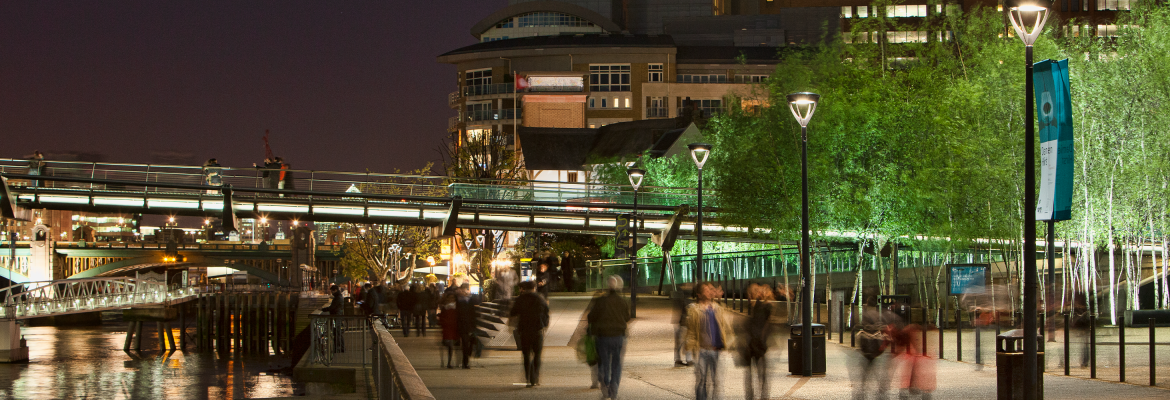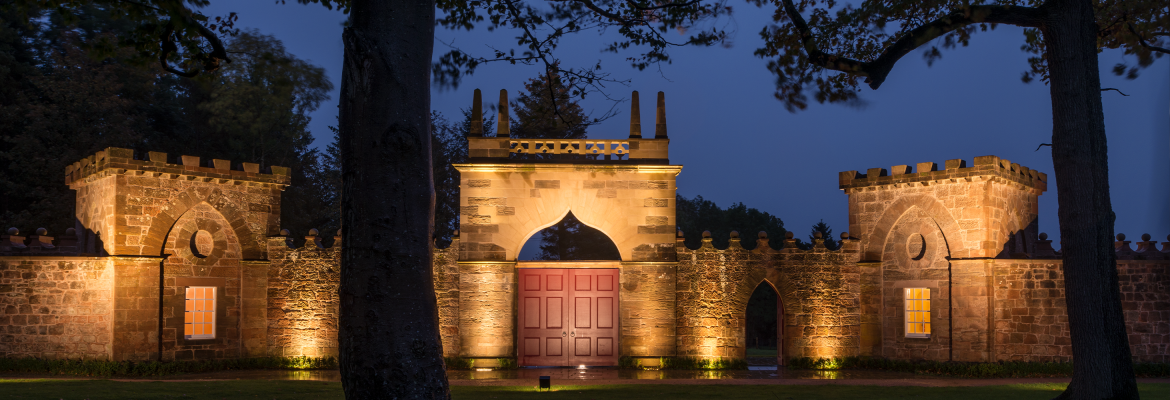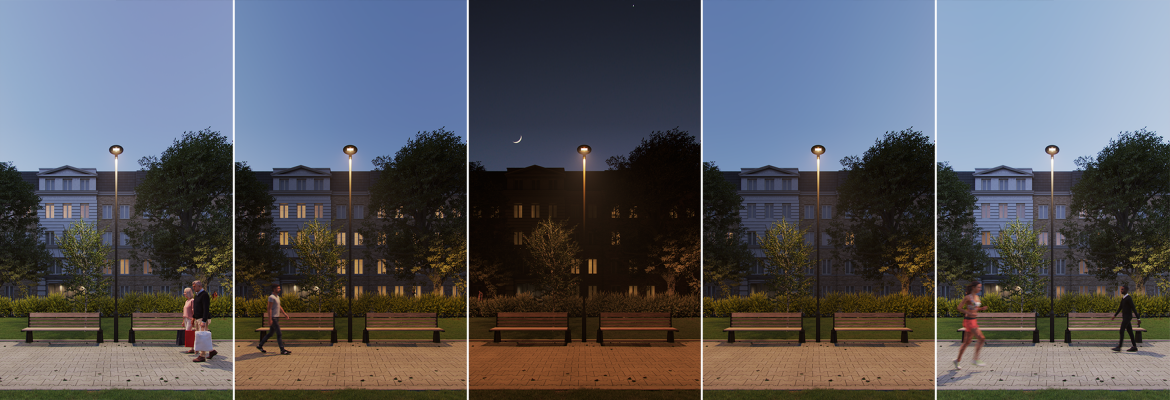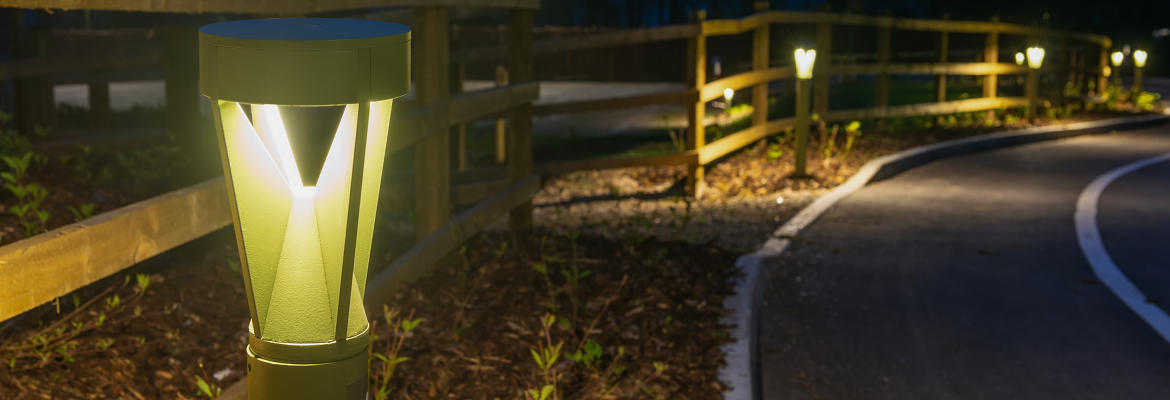Lighting Design: balancing technology and approach for urban lighting
June 2022
June 2022
OPINION PIECE
Urban lighting designers constantly need to balance ensuring pedestrian and road safety with the best energy usage and mitigating adverse effects on both humans and the natural world. The key to success is through also balancing technology and approach.
In this article, which first appeared in the ILP's Lighting Journal (vol. 87, issue 5), DW Windsor provides a detailed explanation of how integral it is to balance technology and approach to achieve safety and comfort for both humans and the natural world.
Night-time illumination is, we all know, a necessity of modern life in many urban settings. Street lighting and other urban illumination are important to help pedestrians, drivers and other road users to identify and react to hazards.
Effective illumination also reduces opportunities for criminal activity and helps people feel safer. It allows people to make judgements about those around them as well as find the safest route.
However, good urban lighting is not just about the level of illumination but also the quality of light used.
Effects on human health
Our bodies respond to changes in light throughout the day to control sleep and support health and wellbeing.

This is primarily triggered by photosensitive cells in our eyes. These cells send signals to the brain and trigger or inhibit the production of neurotransmitters.
Cortisol production, which stimulates alertness during the day, is triggered by the blue wavelengths found in the morning light. Meanwhile, melatonin, which helps ready the body for sleep, is produced in response to the warmer hues and reduced blue light levels found in the evening light.
Recent studies have shown that too much blue light in the environment at night can disrupt this cycle and impact sleep patterns. This can lead to poor cognitive performance and is also linked to an increased likelihood of cancer, cardiovascular disease, diabetes and mental health issues.
While individuals can minimise this type of light in their own homes, poorly designed street lighting can result in light trespass, which of course should always be avoided.
Effects of the natural world
A growing body of evidence is demonstrating the potentially serious impact that the wrong lighting can have on wildlife.
One particular focus has been on bats, which are especially affected by white light. Bats are nocturnal and rely on darkness to avoid being hunted by birds of prey. As a result, they will instinctively avoid leaving their roost if it is lit by artificial light that mimics daylight. This means their movement is restricted, and foraging grounds are lost if large areas are brightly lit.
Similarly, recent studies have suggested that incorrectly designed lighting is having a serious impact on insect species that are crucial for biodiversity
As Lighting Journal highlighted last autumn, research by the UK Centre for Ecology & Hydrology (UKCEH), Newcastle University and Butterfly Conservation found that moth caterpillar numbers in hedgerows under LED streetlights were 52% lower than in nearby unlit areas and 41% lower in areas lit by sodium lighting.
In 2020, BS 5489, the standard for road lighting, was updated and now includes a section on ecology. In particular, it refers designers to the Institution of Lighting Professionals’ Guidance Note 8 on bats and artificial lighting. This also states that an ecologist should be consulted on the specification of lighting to help reduce the negative effects.

Design best practice
One of the most important considerations is specifying products that produce light with a warmer colour temperature to minimise the amount of blue light while ensuring a high CRI for clarity and visibility.
Advances in LED efficiency mean that warmer colour temperatures can now deliver equivalent light output levels of cooler light sources from just a few years ago. In addition, warmer LEDs now offer improved CRI performance compared with sodium products of the same colour temperature.
For example, comparing a 1950K high-pressure sodium product to an equivalent 1800K LED, the CRI is almost three times higher – Ra25 compared with Ra70.
In addition, the development of tuneable white LED technology now provides designers with another tool to help solve the issues of urban lighting. Tuneable white systems (such as the one found in our Daytona luminaire) typically utilise two separate colour temperatures (for example 3000K and 2200K) that, when mixed at different intensities, can produce a range of colour temperatures.
The technology allows the light to be varied from cooler colour temperatures, which can improve visual comfort and offer a sense of security, to warmer, ‘softer’ light that helps minimise the negative effects on wildlife and people.
Varying the colour temperature of the light can significantly impact blue light content. For example, the blue light peak of a 2200K source is as much as 66% lower when compared with 3000K.

This tuneable light can be combined with advanced controls to allow changes in brightness throughout the night, allowing designers to create schemes using a mix of colour temperatures and intensity levels.
For example, a cooler colour temperature can be used during peak activity hours for better visibility and safety, then you can transition to a warmer light with reduced brightness overnight. This can be reversed in the early morning when traffic levels increase.
Furthermore, it may be possible for some urban lighting applications to utilise luminaires that include motion-based activation. Depending on where it is located, it may be possible to have lighting that dims or even switches off when nobody is present. This not only reduces energy wastage but also increases the number of areas in darkness, helping to minimise the impact on nocturnal wildlife.
However, concerns have been raised that switching off or dimming lights at certain times of the night may increase crime and undermine safety.
While a 2015 study found no correlation between streetlights being switched off and changes in traffic collisions or crime, more recent research by the Free to Be campaign suggests lighting still plays a critical role in influencing people’s perceptions of safety in a public space.

Another essential consideration is controlling light distribution to ensure that light is directed to where it is needed with minimal spill. This not only minimises light trespass into homes but also helps create areas of darkness for wildlife and reduces the upward ‘skyglow’ light pollution that has become an issue in recent decades.
One of the key causes of skyglow is luminaires that project light above the horizontal plane. This can be eliminated through the use of flat glass luminaires that ensure light is projected downwards.
Finally, a wide range of optics for luminaires allows precise control over which areas are illuminated. Choosing the correct optic based on the type of application, such as a road or footpath, as well as the size of the space and the physical location, will help achieve a carefully controlled distribution.
Light shields are also highly effective in eliminating light trespass and may be considered when illuminating sensitive areas.